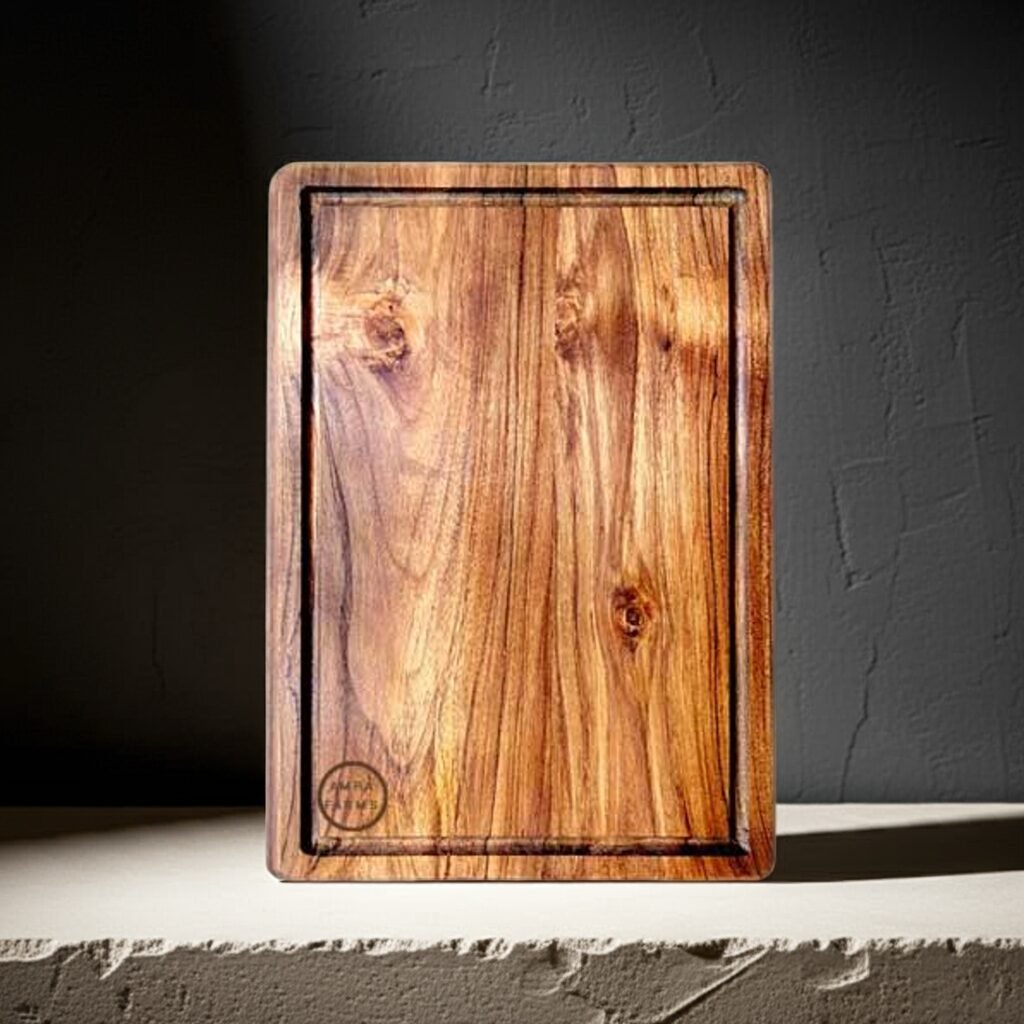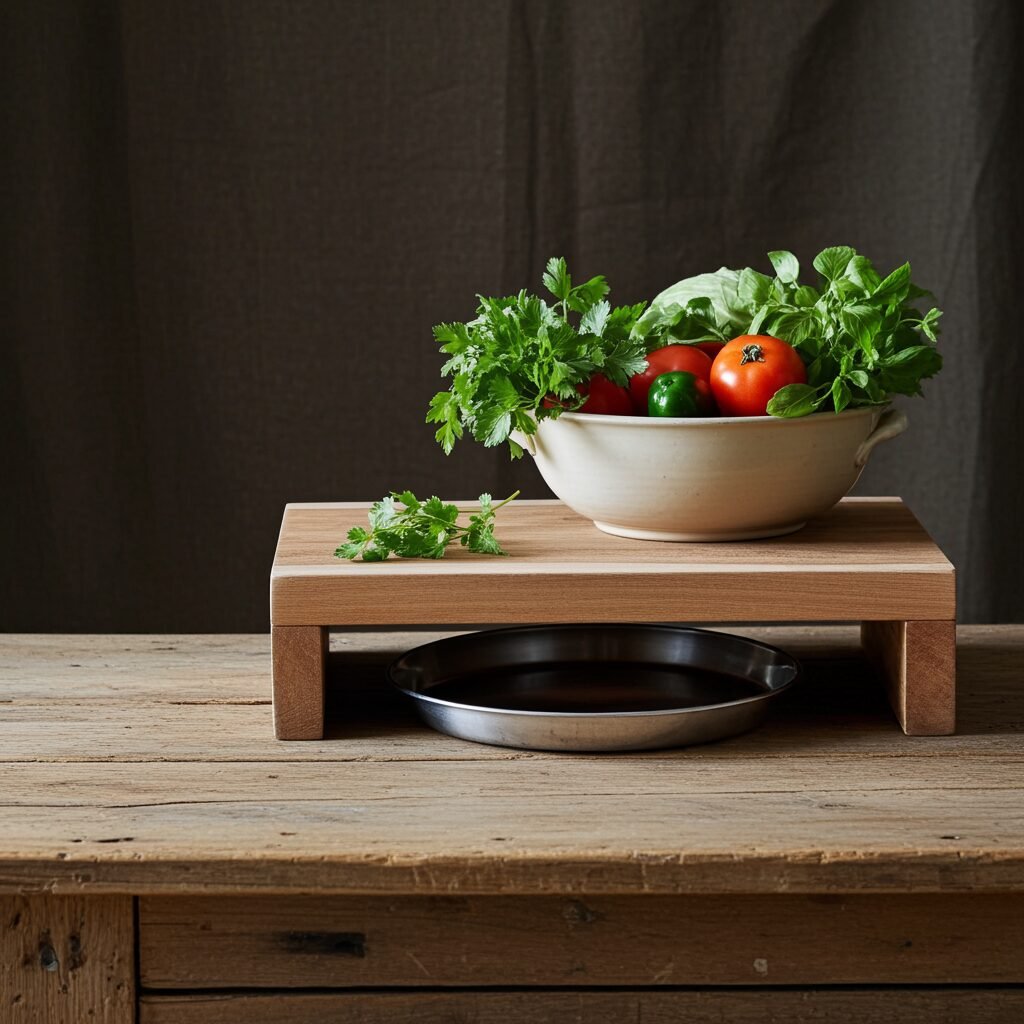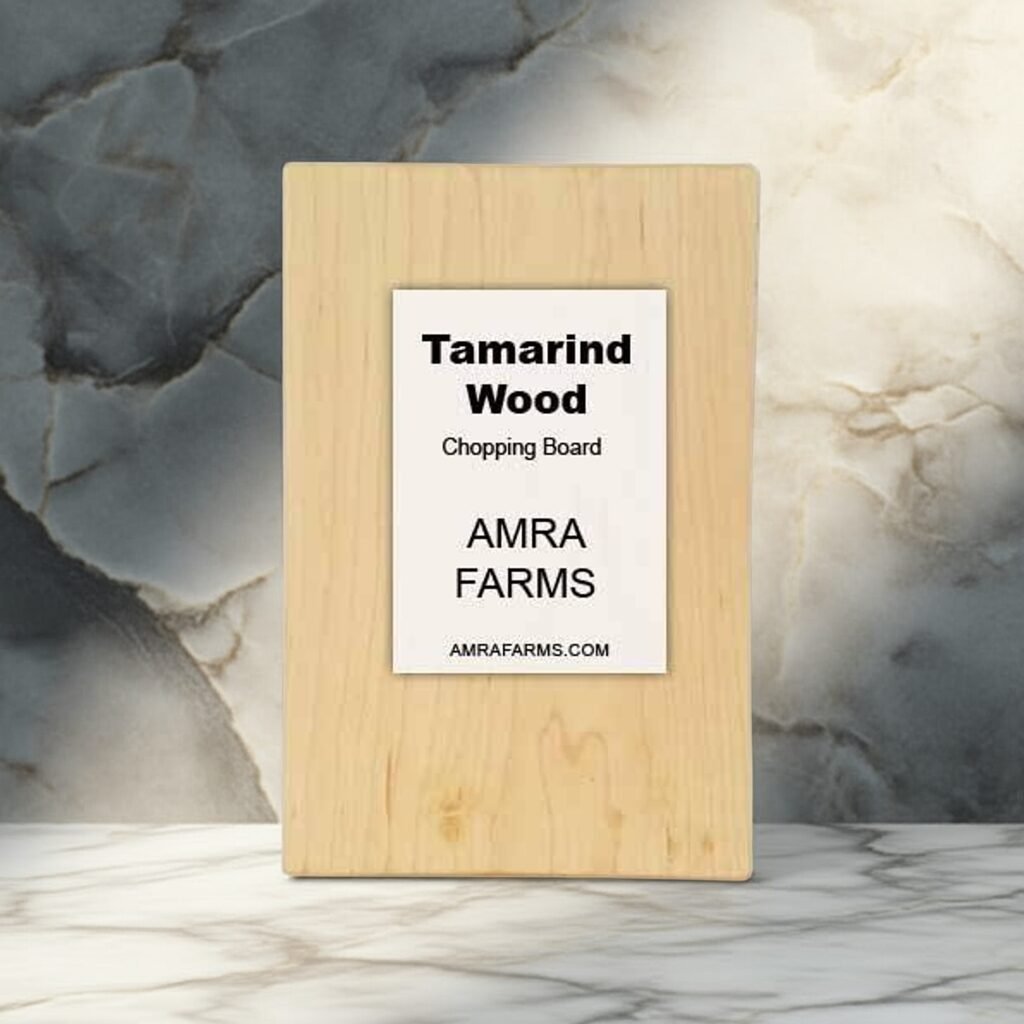Your cart is currently empty!
Commonly used Wood in India for Chopping Boards
India, being a tropical country with weather conditions varying from north to south, a wide variety of wood is available. The northern part of India and the Himalayan range has wood like Deodar, Walnut, Poplar, Tun, and Horse Chestnuts. The central part of India and the southern part of India is known for a wider range of wood like Teak, Mango, Neem, Rosewood, and Acacia. Some woods are not native to India, like Pine, which is often imported for specific purposes. Each wood has its own set of features and is beautiful in its own way. This article explains the nature, properties, and uses of each type of wood.
Teak Wood Chopping Boards
Teak wood is grown in the central and southern part of India. This includes parts of Gujarat, Madhya Pradesh, UP, Kerala, Tamil Nadu, Karnataka, and Andhra. Known for its beauty and durability, Teak wood has always been the first choice for furniture. The love for Teak wood among Indians goes back centuries. Artifacts and sculptures created with Teak still adorn palaces and forts in India. The use of Teak wood is not limited to structures but also to shipbuilding during ancient times. The Mughal era was also notable for the use of Teak wood in tombs, palaces, and important structures. During the British Raj, Teak was exported from India and used in their own building projects.
Today the cultivation of Teak is more controlled and with more and more plantation of Teak, the use is also more common. Teak is one of the few preferred woods for chopping boards due to its availability and affordability. Teak wood chopping boards can stand the test of time and frequent exposure to moisture and can take cuts and scratches with grace. Their rich silica content and oil content make it a perfect material for chopping boards, ensuring minimum moisture retention and absorption, excellent resistance to pest and insect attack and resistance to mold and fungal growth
Mango Wood Chopping Boards






Mango wood is known for the religious and cultural uses. Used for ritual firewood in Hindu yagnas, the tree is sacred to Hindu culture. The wood of the trees is used for making low-cost furniture, storage boxes, shelves, and cupboards. They are found in tribal regions for carvings and agricultural tools. The leaves of the trees are used in marriage rituals and poojas. Mango wood is easy to work with, light, and a preferred wood for musical instruments like Ektara. They are also widely used in handicrafts in India. The wood is light in colour, relatively strong, and durable.
The Mango wood is abundant in India. With trees mostly used for cultivation of the fruit, they are cut down when the trees are mature and do not yield fruits. With the abundance of Mango cultivation in India, the trees and logs of Mango wood are easy to acquire, cheap, and a sustainable source for creating furniture and artifacts. The wood is used for creating dining tables, coffee tables, cabinets, beds, and bookshelves. They have a rustic farmhouse style for furniture and its rich patterns and warm colour tones are interesting in certain styles.
Widely available in Uttar Pradesh, Andhra Pradesh, Tamil Nadu, Maharashtra, West Bengal, Bihar, and Kerala, Mango wood is often sourced from orchards where trees reach the end of their fruiting stage.
Mango wood is considered a relatively cheaper wood for creating chopping boards. Mango wood chopping boards are best for chopping vegetables but are known to be less resistant to water. They are also vulnerable to insect attacks, moisture, and mold.
Mahogany Wood Chopping Boards
Mahogany wood is known for its straight, fine, uniform grains and natural lustre. The wood is reddish-brown in colour. The wood darkens beautifully with age. They are smooth and even and polish well. Moderately hard and dense, the wood is durable and termite-resistant. They are also moderately moisture-resistant and rot-resistant, making it a perfect material for chopping boards. Considered a luxury hardwood worldwide, Mahogany is used for making furniture. Mahogany is not native to India and was introduced by the British during colonial rule in the 18th–19th century for luxury furniture production. The variety planted in India is known as Honduran Mahogany or its hybrids.
Mostly planted in Assam, Kerala, Bengal, and coastal Karnataka, they were used widely in colonial furniture, courts, and railway offices for the prestige and finish. Known for Victorian-style furniture, writing desks, chairs, almirahs, and panelling, it is not as widely used as Teak or Sheesham. They are only sought after by high-end furniture makers and interior designers. It is a popular wood for furniture and cabinetry, musical instruments like guitars and violins, and crafting and décor.
Mahogany does not have any religious roots in Indian tradition but is associated with wealth, elegance, and colonial grandeur. Mahogany is rarely used for chopping boards, as they tend to let out color from the wood, but some boards are created with mahogany due to its rich color. They add beauty but lack the functionality.
Sal Wood Chopping Boards
The Sal tree is known for its durability and hardness. They are very dense and harder than Teak. A heavy wood, they are resistant to water, fungi, and insects. They are difficult to saw or plane due to its high density and resin. Used for structural work, they have a distinctive resinous smell due to the high oil content. The heartwood is dark brown and the sapwood is pale yellow-white, with interlocked rough, less uniform grains.
Sal is indigenous to the Indian subcontinent and dates back to ancient Vedic times. Mentioned in texts like Mahabharata and Ramayana and in Ayurvedic literature. They were traditionally used in temple construction and village architecture in eastern India. Railway sleepers, beams, and pillars were constructed with Sal wood in the British era. Traditionally house building with Sal in Jharkhand, Chhattisgarh, Odisha, and Madhya Pradesh was common. It has spiritual significance in Buddhism as Buddha was born under a Sal tree, also known as a Lumbini tree.
In modern times, Sal is used in construction and infrastructure, widely used in government housing schemes, furniture like beds and benches, outdoor applications like bridges, jetties, poles, fence posts, and decking where moisture exposure is high. Sal is also used in agriculture for packing crates and plough handles.
Sal is dominant in the central and eastern Himalayan belt. Jharkhand, Chhattisgarh, Madhya Pradesh, Odisha, West Bengal, Bihar, Assam, Uttarakhand, and Uttar Pradesh are known for their Sal.
Sal is not suitable for chopping boards because it’s hard to work with. Its high density, pungent smell, and its nature to crack when not dried carefully makes it a less desired wood. Also, the wood looks less elegant compared to many other woods commonly available.
Neem Wood Chopping Boards
Neem is one of the most common woods available all over India. It is known for its medicinal values but its wood is used for construction of cots, religious items, storage boxes, windows, and doors among others. The wood features straight, slightly interlocked, uneven grains. They have a light reddish-brown to deep golden-brown colour. They are moderately hard and strong, durable, and naturally resistant to termites, pests, and fungal attacks. Easy to work with, they are medium-weight wood, lighter than Teak and Sal. The distinctive fragrance of Neem is known to deter pests.
Neem is one of the revered trees in India, also known as the village pharmacy in Ayurveda. The medicinal uses are known widely and the wood plays a vital role in rural Indian life. From agricultural tools like plough handles, yokes, to storage boxes to store grains for its pest-repellent properties, religious items and charpoys are crafted with Neem wood.
Neem was particularly not the most favourite for chopping boards due to its strong smell and its ability to impart bitterness to the food you cut. Recent years have seen an increase in many users preferring Neem wood for cutting boards due to its medicinal benefits.
Neem is found in northern, central, and southern India. There are only a few extremely cold areas where Neem does not grow. Uttar Pradesh, Madhya Pradesh, Rajasthan, Tamil Nadu, Karnataka, Andhra, and Kerala are all Neem-growing areas naturally.
In Indian culture, Neem leaves are hung in the entrance during festivals to ward off diseases and evil. The twigs are used to brush teeth and in fire ceremonies/homa. Neem is considered cool in nature according to Ayurveda.
Neem wood chopping boards are slowly making its way into indian kitchens due to its medicinal properties.
Categories
Products
- Buy Wooden Vegetable Cutting Boards Online
- Wooden Kitchen Accessories Tools
- Buy Butcher Block & Meat Cutting Boards Online
- Buy Premium Edge Grain Single Block Wooden Chopping Boards Online
- Buy The Best Teak Wood Chopping Boards Online In India
- Buy Wooden Cutting Boards With Handle For Kitchen
- Mango Wood Chopping Boards
- Single Block Chopping Boards
- Tamarind Wood Chopping Boards
- Wooden Platter Boards , Pizza Platters & Charcuterie Boards
Tamarind Wood Cutting Board Teak Wood Cutting board
